2024 Aston Martin Vanquish | PH Review
The Vanquish is back with 835hp and not a battery cell in sight. Can it really be as good as it sounds?

Trajectory was a hot topic at the new Vanquish launch. Aston considers itself on a multi-year journey and has an instructive graph to illustrate it. With ‘ultra-luxury’ on the y axis and ‘performance’ on the x, the manufacturer has itself leaving conceptual orbit at a 45-degree angle. Scientifically accurate? No. But it’s meant to show that Aston wants to be thought a close rival of Rolls-Royce on one hand, and a near eye-level challenger to the likes of Ferrari on the other. It has shown the graph before, most notably when introducing the DB12 last year - but with the Vanquish, an 835hp, £330k replacement for the DBS Superleggera, you get a real sense of where the line has been heading this whole time.
In reality, of course, there are many forces ultimately governing Aston’s trajectory. But if we boil it down to just the car for the moment, it is clear that for its maker the all-new V12 is meant to rocket it into the must-have stratosphere. And yes, it has the same 5.2-litre capacity as the twin-turbocharged engine that powered the old DBS (the same bore and stroke, too), but almost everything else about it is new. New block, new conrods, new cylinder heads, new camshafts, new fuel injectors, new blowers, mated to a now chunkier ZF eight-speed automatic. Some of this newness was needed to comply with all current and foreseeable emissions legislation, but also to make the unit sturdy enough to reliably generate more power. And more V12 power - delivered, pointedly, without the tedious assistance of battery cells, and to a single axle, is both the Vanquish’s calling card and its chief reason for being.
The auspicious timing of its appearance owes something to luck - even if Aston has earned some of that. Somewhere else in the automotive multiverse, its combustion-heavy, old-fangled approach is probably being made to seem regressive and unwanted. But not this one. Customer fascination with end-of-the-line, large-capacity petrol engines shows no sign of abating, and the Vanquish steps into a spotlight recently vacated by the likes of Bentley’s 6.0-litre W12 and Lamborghini’s 5.2-litre V10. The opportunity for Aston to make considerable hay for the next few years probably does not even hinge on it overcoming the comparative appeal of the 6.5-litre F140 motor now installed in the Ferrari 12Cilindri. But it absolutely does want to - just in case you thought the Vanquish's 5hp superiority in output purely coincidental.


The Vanquish’s status as a rarefied, rampantly combustive two-seater (the DB12’s comically small rear pews are replaced by a rear cross brace and some space for some optional saddlebags) means you’re probably all going to like it on spec, as well you might. But whether or not you love it might hinge on what you think of the exterior styling. Obviously the 80mm of wheelbase added between the A-pillar and the front axle is there partly to distinguish the flagship from the DB12, an understandable bit of design reasoning only slightly undone by seeing the Vanquish in isolation - where, detailed adjustments notwithstanding, it does look fairly similar from the front.
But that’s fine because the real revelation is at the back, where the ‘ruthlessly abrupt’ Kamm Tail provides the Vanquish with the sort of ready-to-pounce, muscle-coupe look that Aston has until recently reserved for duck-tailed special editions like the Valour. Sure, we can argue all day about whether that floating ‘shield’ (customisable in carbon or body colour) is a good thing - but, trust me, stand in the right place to the rear of this phat-haunched teardrop, and it’ll spin your eyes back into your head like a fruit machine. Briefly, it made me think of Steve McQueen’s 275 GTB/4. So they got something right.
You’d need some cabin to live up to that reference and, as hard as Aston has tried, the Vanquish doesn’t quite pull it off. Of course, memory of the manufacturer’s mediocre, Mercedes-cribbed era is sufficiently fresh for the Vanquish to still seem very pleasant indeed, with considerable plushness baked in by default - nevertheless, you do start to wonder if the interior, even as a dedicated two-seater, is a smidge short on wow factor for a car getting on for half a million quid when the options and personalisations start piling up. Shared hard points only get you so far in this rarefied air, and while its slightly inferior aspects (the naff indicator stalk and seat controls, the naff-looking digital instrument cluster, the very naff-to-use steering wheel switchgear) were easily forgiven elsewhere, they do chafe a bit under the weight of that price tag.


Aston’s own ambition (think graph) will have already alerted to it to the shortcomings of its in-house infotainment system, which, though perfectly formed and neatly integrated, is no exemplar of usability. That the manufacturer preferred to use Google maps via supplied smartphones than rely on its own sluggish sat nav speaks volumes. In this respect, the retention of so many shortcut buttons has served Aston well: you rarely need to interact with the touchscreen to the same extent as you would elsewhere - and there’s much we’re prepared to forgive these days when supplied with a dedicated roller for temperature, and another for fan speed. The seats are great, too; quilted, low-mounted and substantial, and the pleasing sense of space, aided in no small measure by the ginormous standard panoramic roof and newly lowered centre console, is terrific. Vanquish is one of those cars that feels generously proportioned even when its touch points are shrink wrapped for your convenience.
This is very much by design - the sensation of instinctive control is a running theme for Aston - and as a place to spend lots of time and miles, it’s right on the money. The relationship between seat, pedals and steering wheel is great, too, as is the view ahead (save for the traditional perils of a long prow). In fact, as soon as the V12 barks to jangly life, there is already the sense that you might need some persuading to leave the driver’s seat. To say that the Vanquish’s charm is underwritten by its new engine is a bit like saying The Beatles relied heavily on John and Paul’s songwriting. No surprise there, perhaps, given Aston’s careful focus on its sensory pleasure - yet it seems doubly important to reiterate in the wake of so many airless, soulless, fun-less battery-powered cars of equivalent output. The V12’s sheer bigness, in churning sound and latent potential, is a full Nebuchadnezzar of tonic in 2024. And, as its maker intended, as elemental to the Vanquish’s USP as gravity is to a water slide.
Nevertheless, while there is inevitably a Master-of-the-Universe thrill in having 12 baritone cylinders at your beck and call, Aston has been careful not to make the Vanquish seem like a destroyer of worlds from the moment you switch it on. The startup GT mode is intended to live up to its name, stressing not just quieter about-town usability from the outset, but also providing a place where the owner can retreat back to when 738lb ft of torque - and the obligation to use it - all seems like a bit much. As a result, peak twist, which is carefully ‘shaped’ for maximum permissible effect in other drive settings, is deliberately curtailed and the throttle response backed off. There was some surprise expressed in Sardinia about the size of prod subsequently required to access a serious neck injury, though in the UK, where the speed limit not merely an advisory thing, there is a fair chance it will seem like just the ticket. Or better configured at least to not get you issued one.

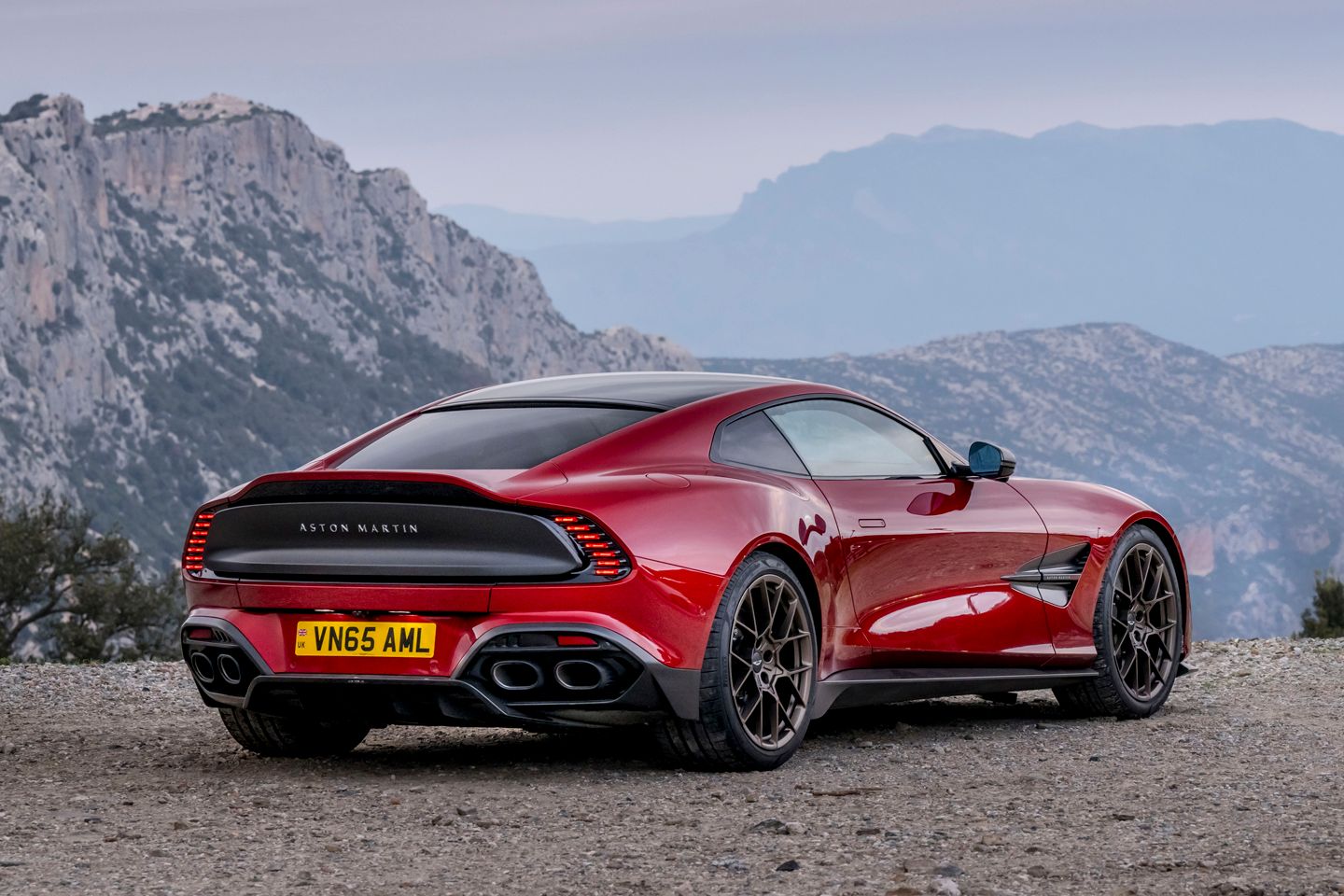
Certainly it does not seem ill-matched to the car, which can do mellow respectably well. The Vanquish shares not only its front double wishbone and rear multi-link suspension with the DB12, but also its Bilstein DTX dampers, which, newly tailored, are again identified as a game-changer in terms of mode bandwidth. Despite being longer, the bonded aluminium flagship is said to be structurally stiffer than ever, thanks to lateral strengthening between the suspension towers (including a more rigid engine brace) thicker subframe undertrays and new crossmembers. This accounts for a claimed 75 per cent increase in lateral stiffness compared to the outgoing DBS 770 Ultimate - although providing the suspension with a firmer footing hasn’t prevented the forged 21-inch wheels from occasionally making sharp-edged collisions seem more noticeable in the cabin than they would in the new Bentley GT.
But these moments, it turns out, should be thought of as surface dimples in a five-litre tin of emulsion. Beyond pockmarked Sardinian towns, the Vanquish unfurls like the proverbial red carpet. At a fast cruise, it isn’t far short of terrific. Supple and sinuous in equal measure, and unafraid of roll insofar as it contributes to a fast-flowing impression of a chassis working in harmony with the road, the car epitomises the kind of tautly absorbing (yet pleasingly frictionless) progress you want from a super-GT. Predictably, this is where many of the Vanquish’s targeted enhancements - the sturdier platform, a 51:49 weight distribution, chunkier anti-roll bars, increased track widths versus the DBS - come to the fore. And if the variable steering assistance and damper response in GT start to seem wanting, that’s precisely when you’re meant to clunk-twist the metal rotary dial to Sport.
Chances are, you’ll have done this much sooner than was strictly necessary as it is the dynamic equivalent of retracting an airliner’s flaps. Suddenly untroubled by the need to seem compliant and easy to manage at slower speeds, the Vanquish gets perceptibly more serious. And tangibly better. Aston has gauged the tighter body control and stouter off-centre steering resistance wonderfully well - its knack for fluent, all-of-a-piece direction changes, seemingly regardless of the car’s near two-tonne kerbweight, really is something; the accuracy of its front end, and the way it embraces minor input changes is an upgrade even from the DB12. And yet, as endearing as it is, this handling improvement feels less about seizing the spotlight than it does widening the runway for what the V12 is now configured to do to your insides the moment the wheel is straight. Or just before then.
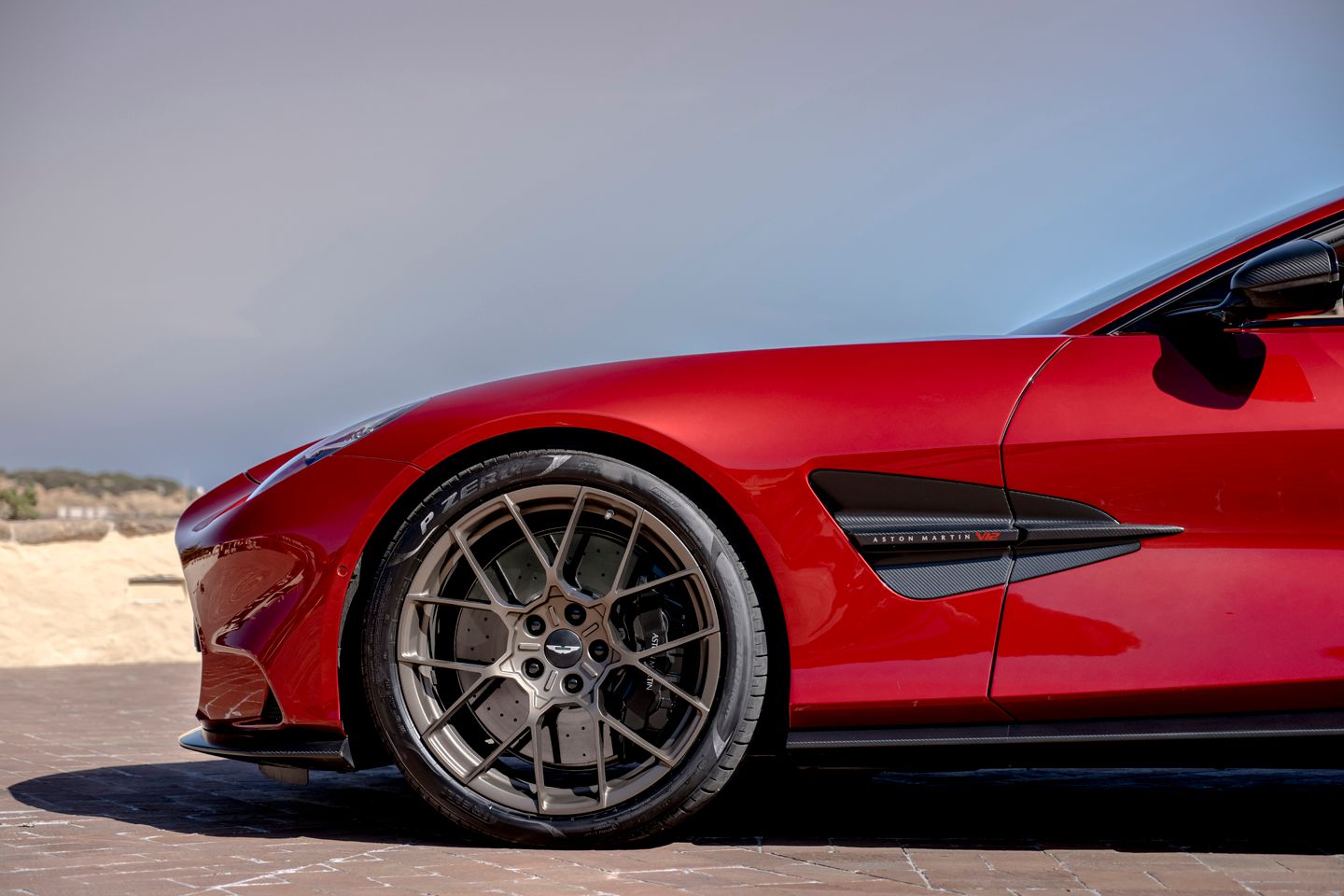
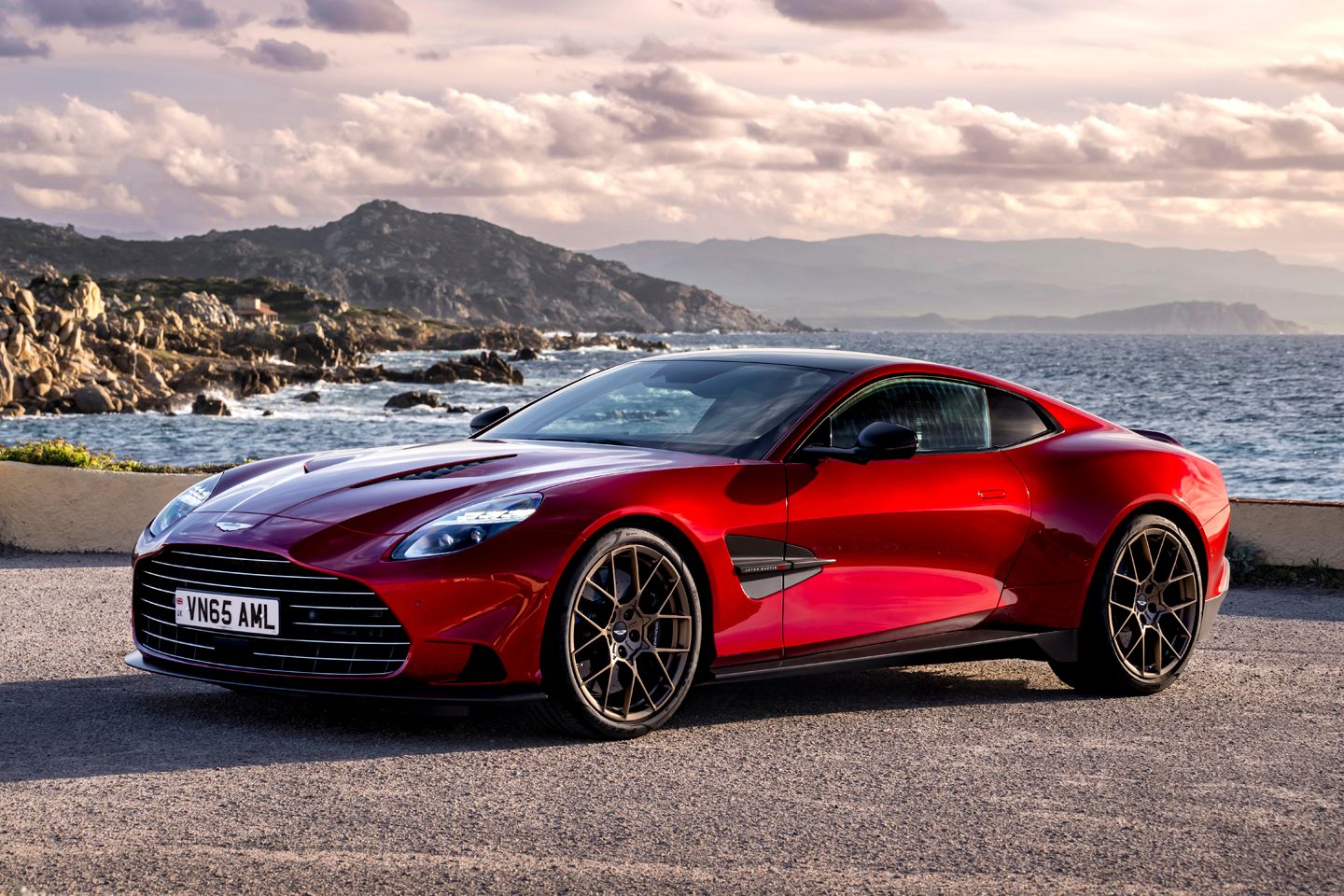
There are many things going on inside this maelstrom, but after three hours in the Vanquish’s company, three elements stay with you. Firstly, gleefully, the sound. The V12 is meant to be a constant companion whether you turn the wick up or not, but in Sport and Sport+ it goes from satisfying your eardrums to entirely monopolising them. The new quad-piped stainless steel exhaust is said to get ‘unique muffler geometry’, although on this experience the optional titanium system (which actually shrinks the muffler) is a no-brainer: the volume and resonance frequency of the lurid, pure-toned howl in the meat of its delivery, even hemmed in by legislative restrictions, are worth the price of admission. Not as untrammelled or as explosive as a Maranello-built V12 perhaps - but still accompanied by the kind of facial expression that makes it look like you’re repeatedly passing through an Orgasmatron. Tire of it you will not.
Secondly, and in a thinly veiled effort to compete with Ferrari’s rev-tastic naturally aspirated engine, there is the conflated outcome of a) a new Boost Reserve function and b) the torque delivery now being ‘shaped’ to better resemble an artillery shell leaving a gun barrel. The former is basically another way of (imperceptibly) pre-charging the boost pressure so that it can be unleashed immediately when called upon. This helps to make the V12 seem sensationally reactive. The torque, peaking from 2,500 to 5,000rpm, is what makes the car sensationally fast (214mph has rarely seemed so attainable, even with a final drive optimised to achieve it). Yet neither would adequately fit Aston’s vision for the Vanquish without its third horseman: the way this is transmitted to the road through the latest iteration of electronic differential and the bespoke compound of 325-section Pirelli P Zero tyres it has opted to switch to.
The surfeit of well-telegraphed grip being summoned up in corners is matched only by the genuinely mind-boggling amount of traction the rear axle finds when dealing with the full savagery of the V12 even in its low gears. The e-diff does not baulk at full throttle even when you do. And while there is evidence of just how hard it’s working the cutting-edge ESP system in tight turns (more so if you dial back the 10-stage traction control) it never seems to prevent the Vanquish from firing away from apexes in a way that eclipses not just the DB12, but also the latest Vantage. Crucially then, and perhaps uniquely for a modern Aston, you never feel like you’re wrestling with the V12’s 835hp - instead, finally, you’re dialled into its full potential, and equally free to scandalously overindulge or just sit back and relax. It makes sense that this is the car its maker has been threatening to build for years. How agreeable to report that it's off our scale, too.
SPECIFICATION | 2024 ASTON MARTIN VANQUISH
Engine: 5,204cc, twin-turbo, V12
Transmission: 8-speed automatic, rear-wheel drive
Power (hp): 835 @ 6,500rpm
Torque (lb ft): 738 @ 2,500-5,000rpm
0-62mph: 3.3 seconds
Top speed: 214mph
Weight: 1,774kg (dry)
MPG: TBC
CO2: 312g/km
Price: £330,000c
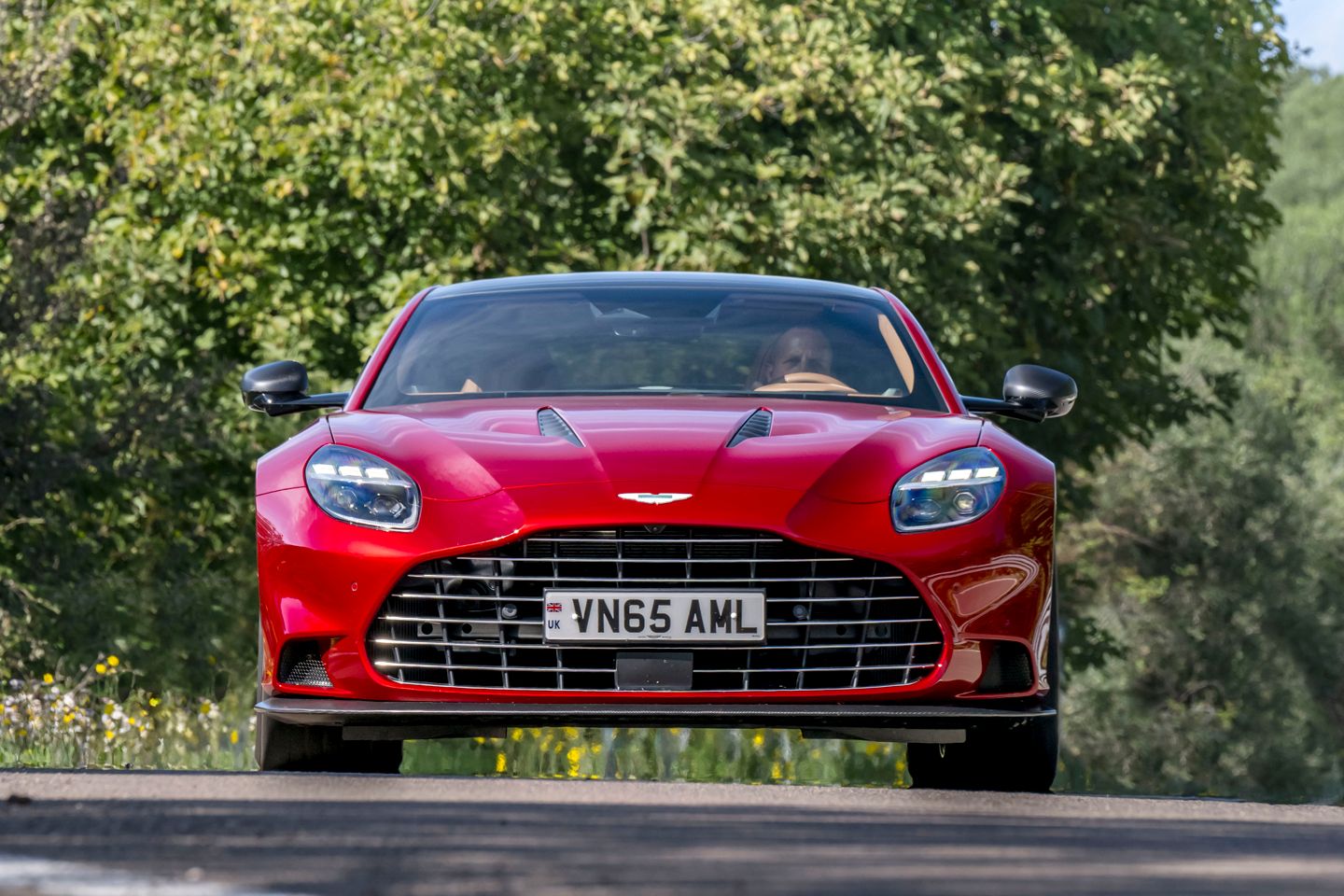

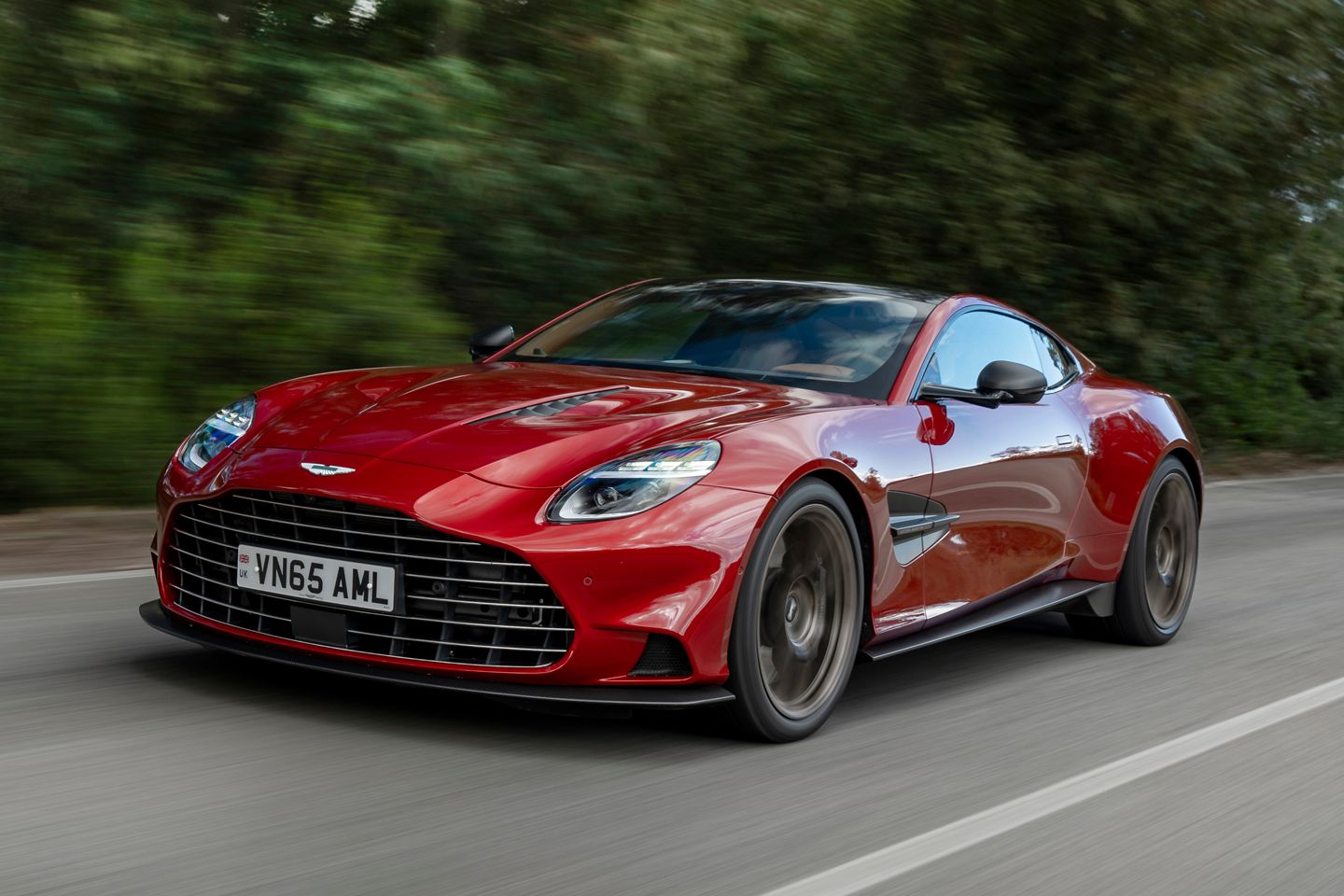
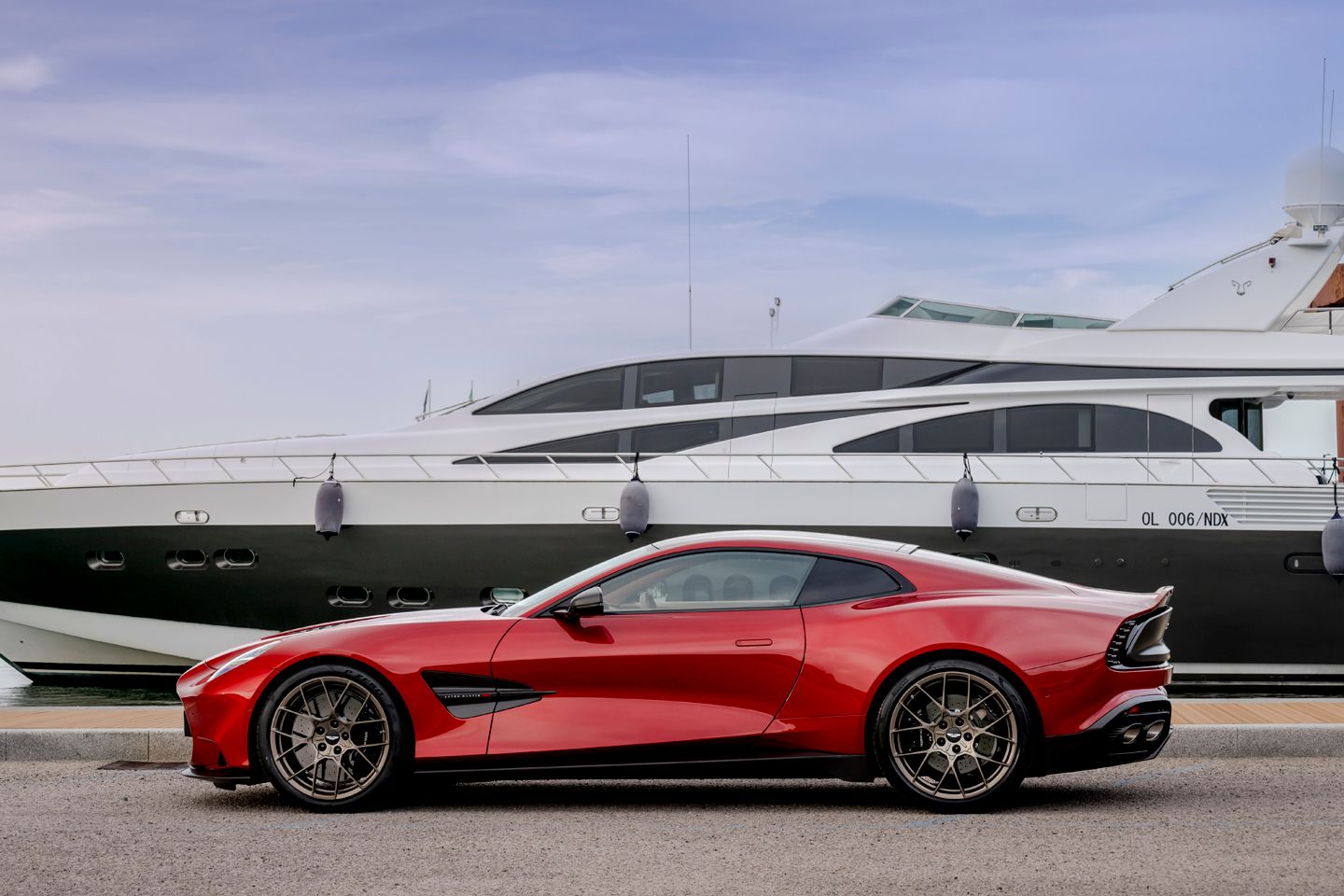

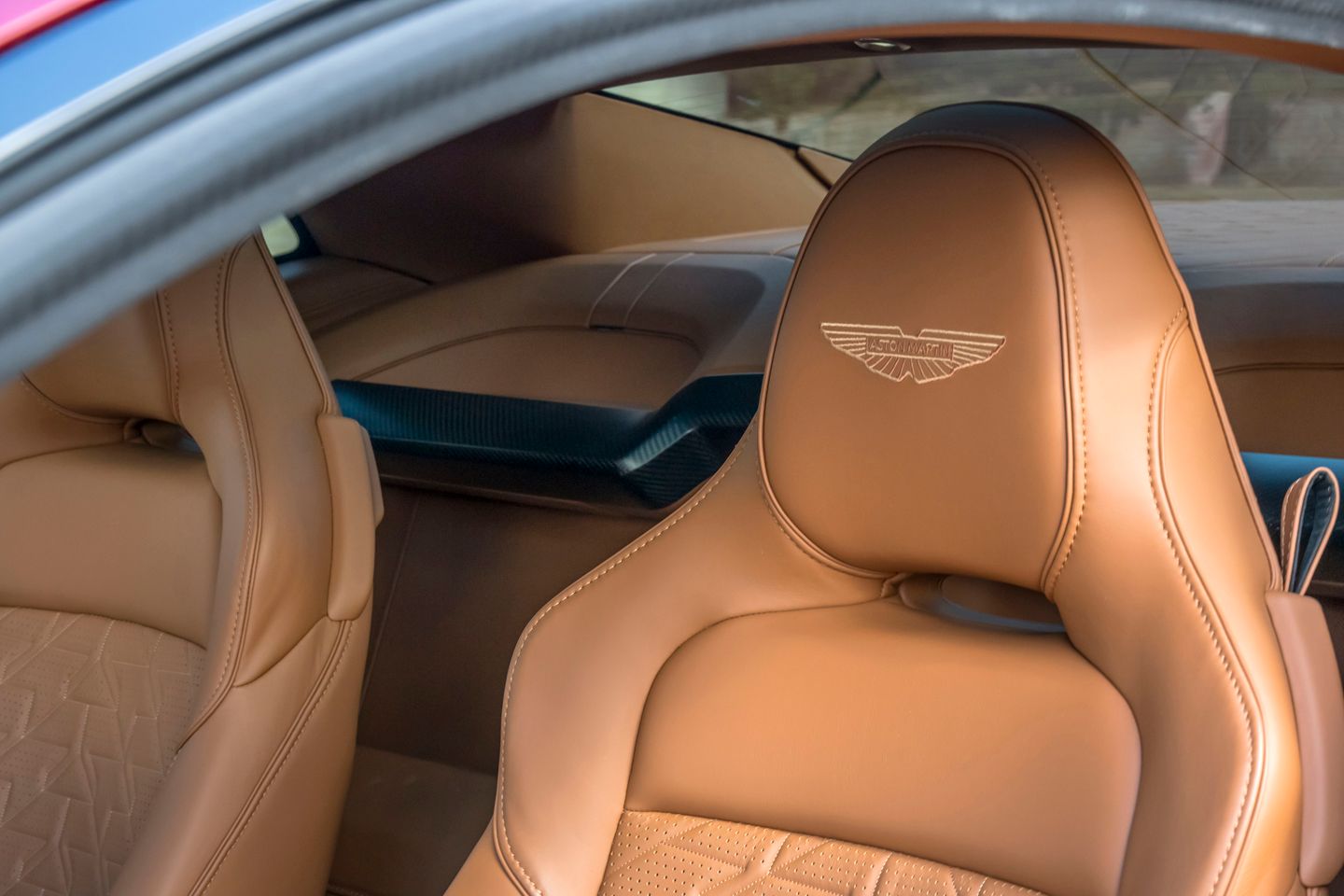
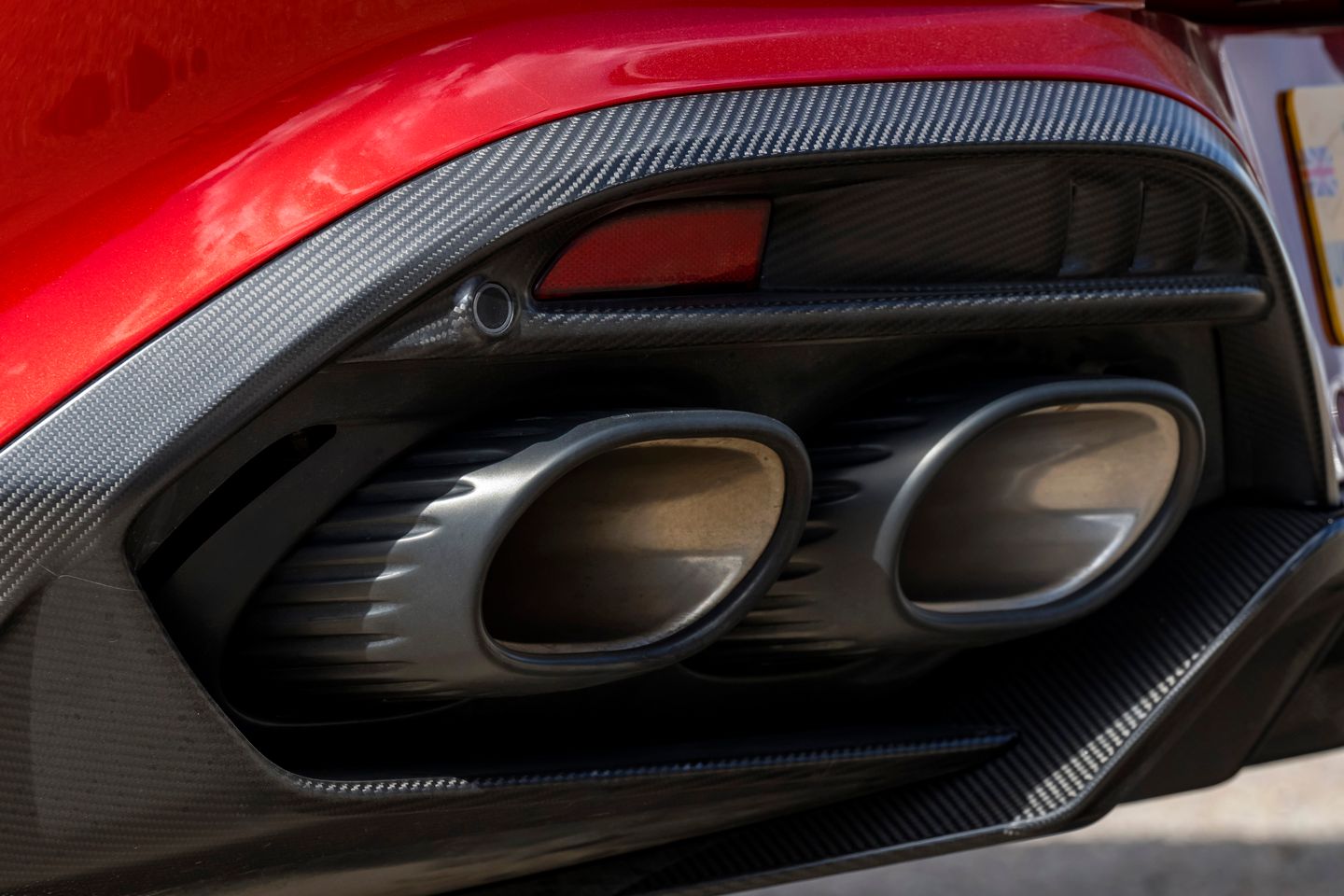
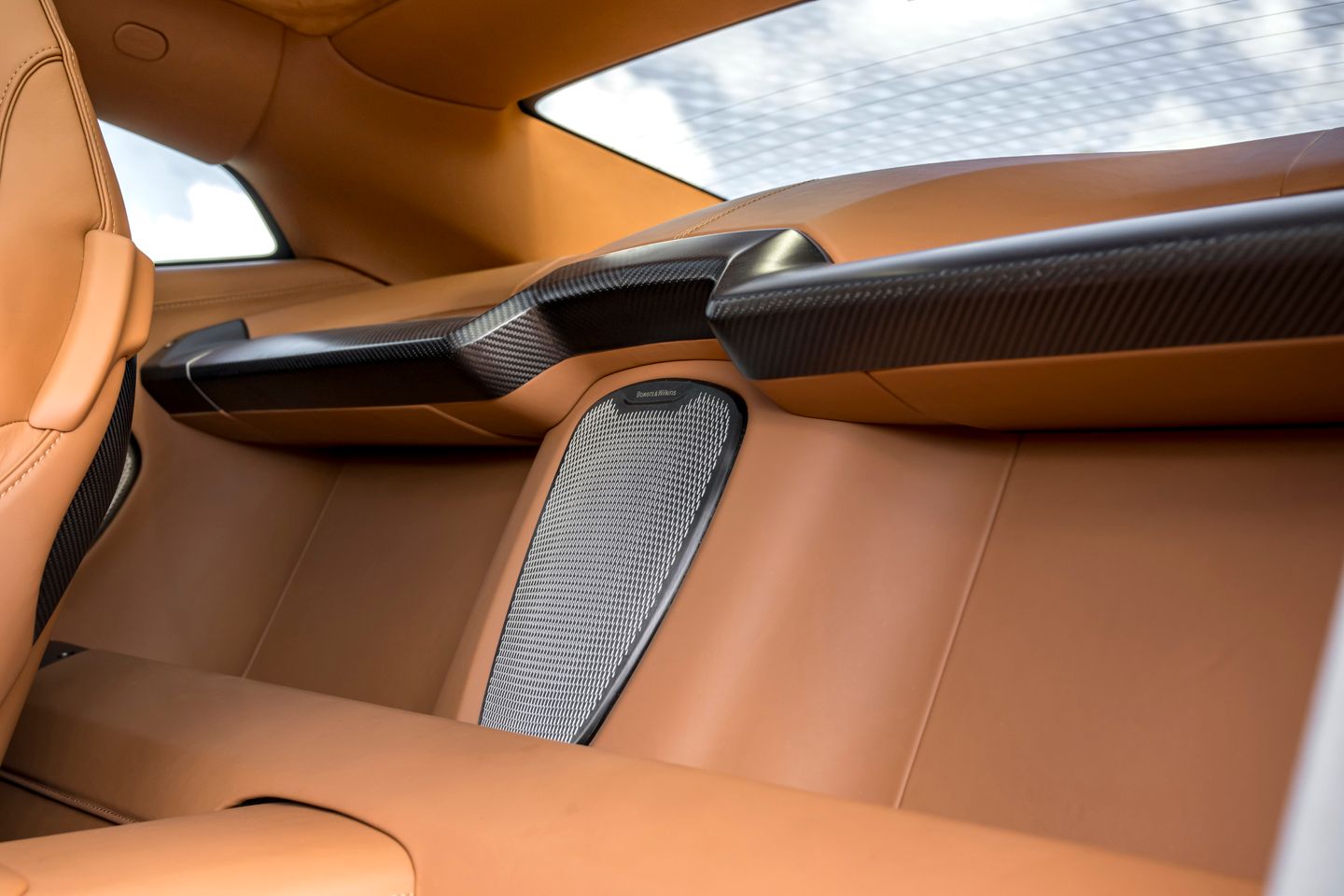
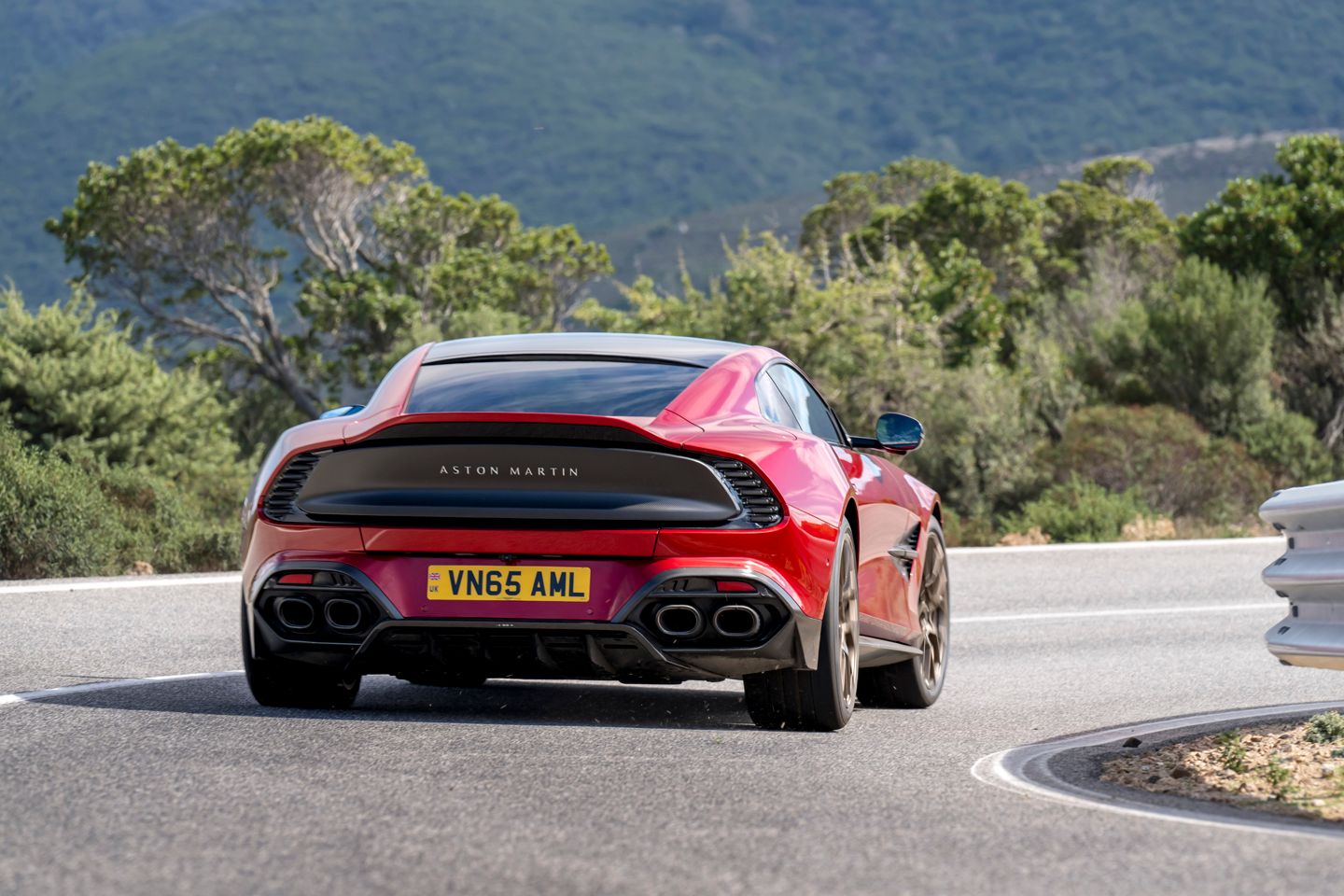
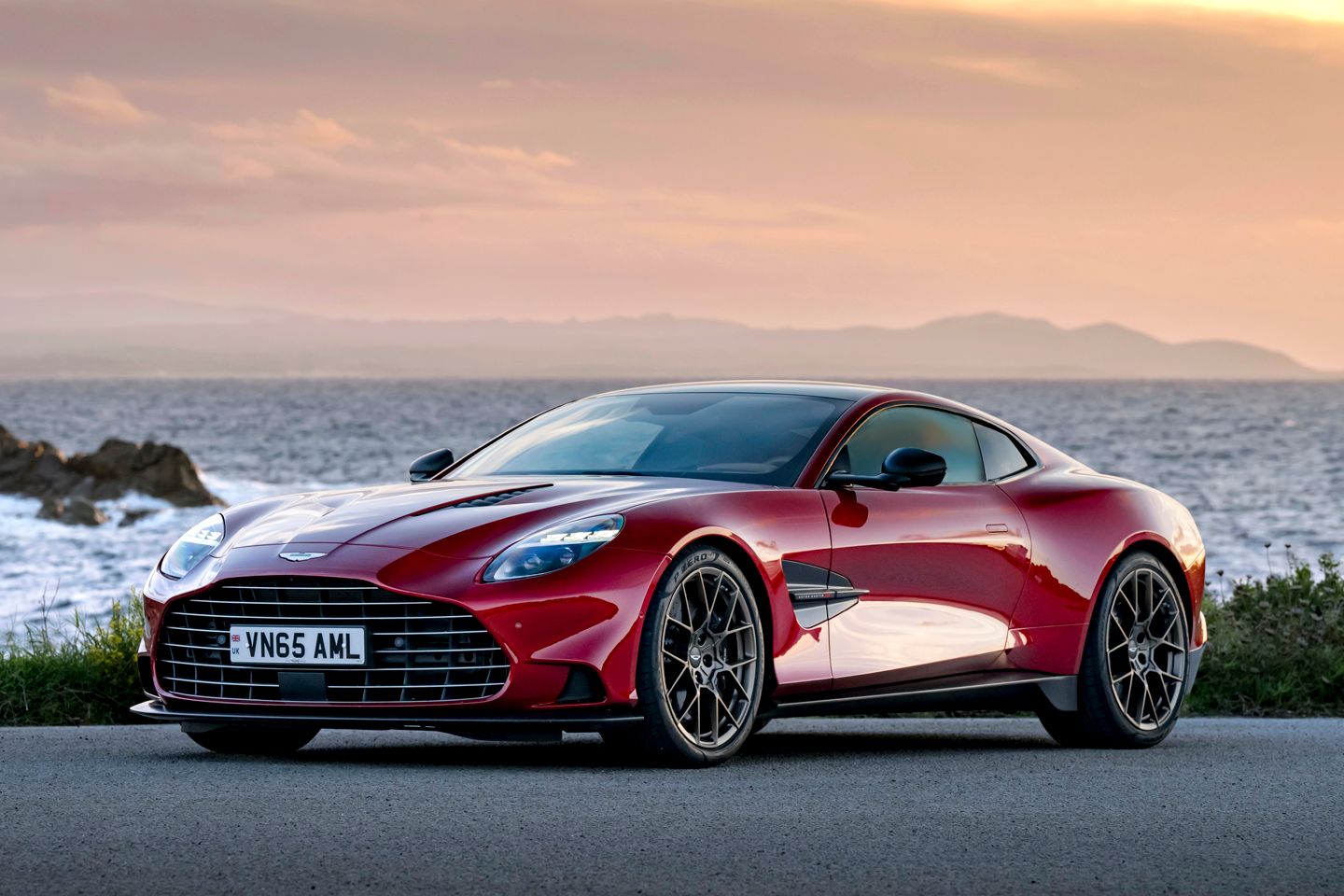
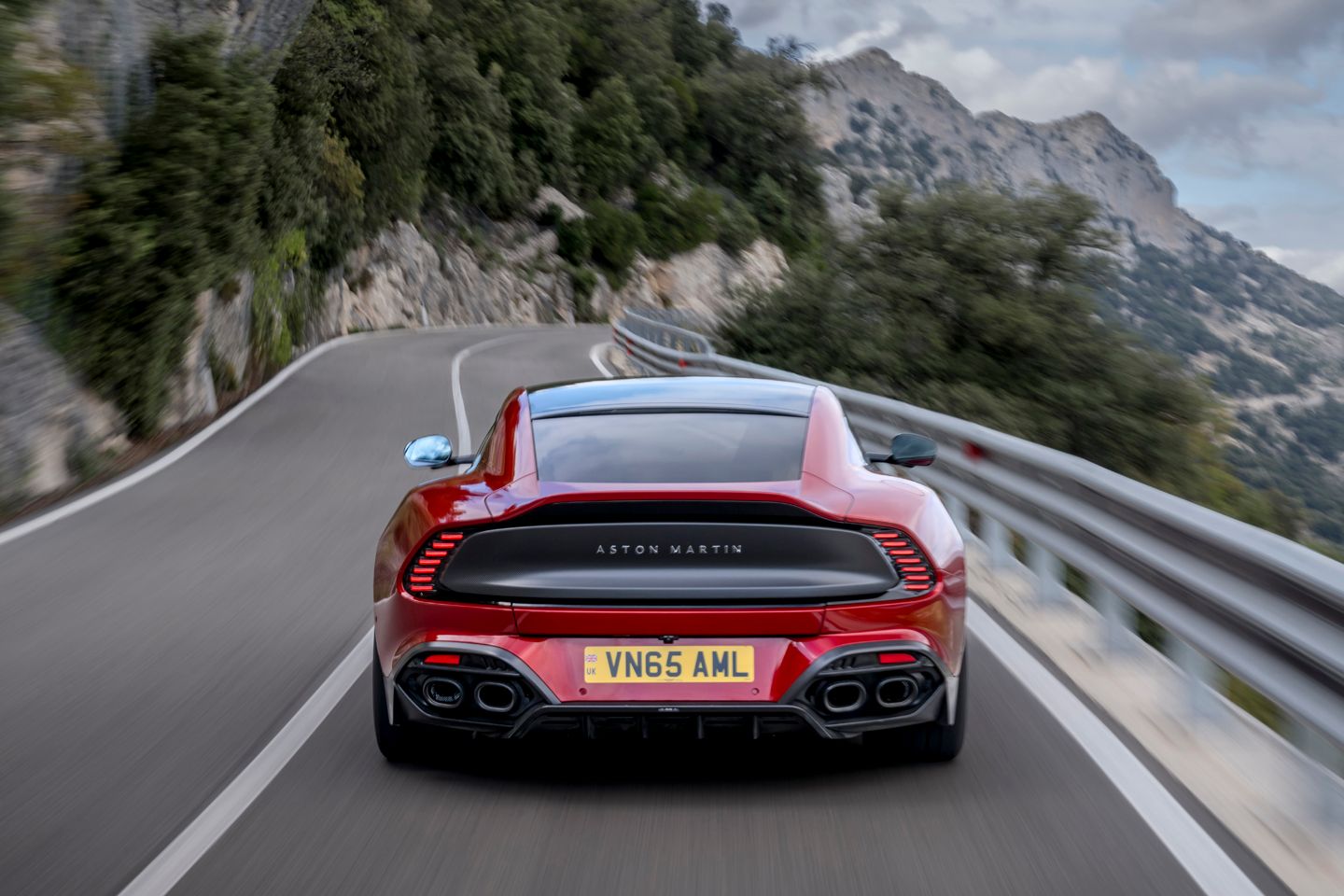
I also don’t see too much of an issue with the interior, probably not 330k worth of quality when comparing it to a Bentley but it looks much less messy than anything Ferrari are pumping out these days, though I don’t see why indicator stalks are always from a parts bin, you touch them and interact with them almost more than anything else in the car.
And I managed to just about make sense of Nic’s writing which is a first for the year.
Probably my favourite-looking Aston since the DB9/DBS.
And in 2024 you can't help but praise any car that still sports a V12.
Like most of us, I'd rather it be naturally aspirated, manual and a few hundred KG lighter but realistically for cross-continental cruising, I'm sure the twin-turbochargers and auto-box improve the experience for 90% of the miles you'd cover.
£330,000 is cheap though. I can't help but feel that for that sort of money, you can get cars that are 1) much more special 2) better driving experiences 3)better GT experiences 4) maybe even all 3 of those things rolled into one.
The rear has that 60s small rear light Iso Grifo/DBS feel to it and maybe that was a deliberate throwback touch from Aston to echo the traditional layout and propulsion, aiming to be the last old school supercar. The dark rear panel may be a similar retro nod but doesn't look good here.
I suspect that baiting the Press car in a Ferrari-ish colour was a bad call, they look better in classier colours. I recently saw a V8 Vantage in metallic brown and it really did look amazing.
What we think is therefore probably irrelevant. It has the brawn, it has gonads the size of a Herefordshire bull so I dare say will do well for Aston.
Presumably you could spect that rear panel in body colour which might help. But I think it needs to have 6 inches chopped out of the wheelbase. It just looks too long to me.
As for the article, I suspect Mr Cackett gets paid by the comma because rarely have I read someone who interrupts himself so often. Flow!
Gassing Station | General Gassing | Top of Page | What's New | My Stuff




 king tremendous. I absolutely would in a heartbeat, even knowing I'd end up in and out of the dealer like I worked there.
king tremendous. I absolutely would in a heartbeat, even knowing I'd end up in and out of the dealer like I worked there.